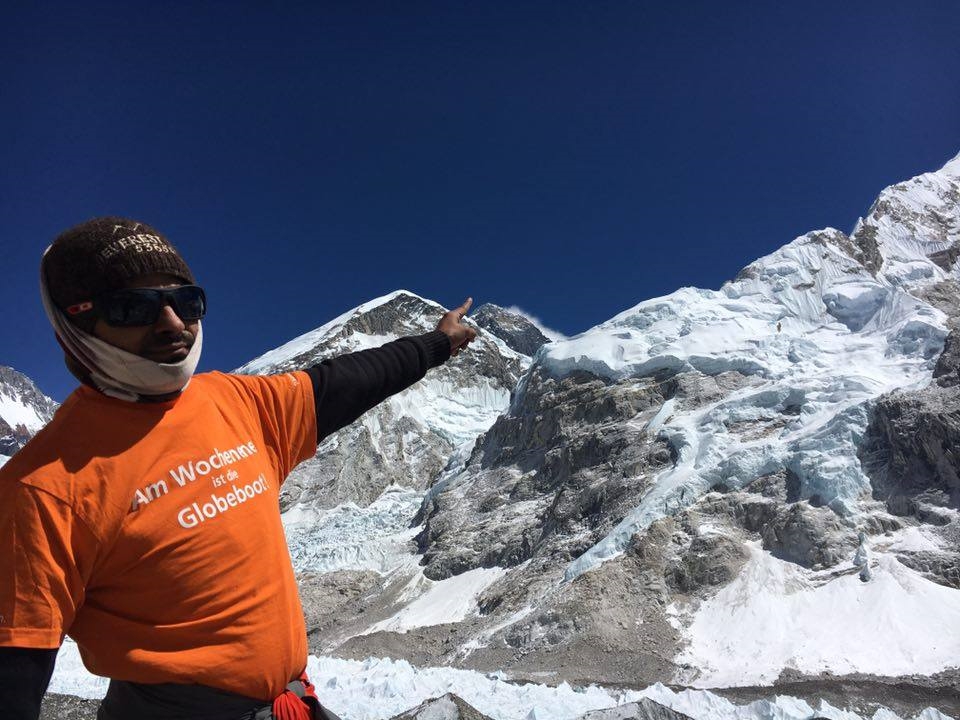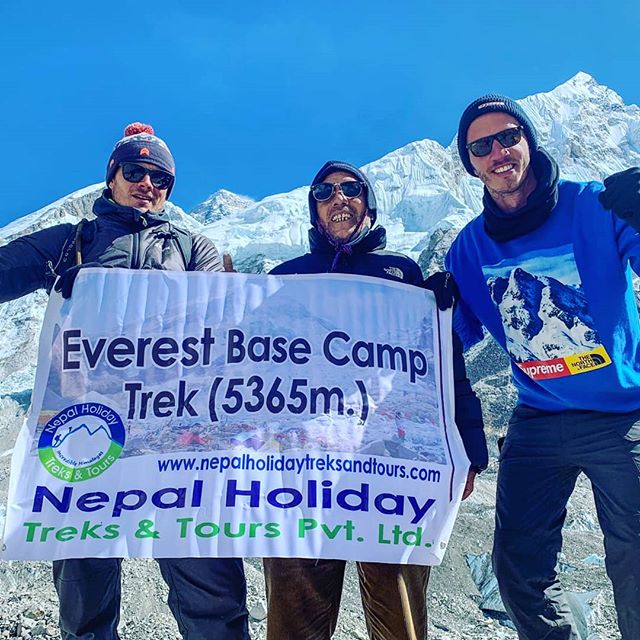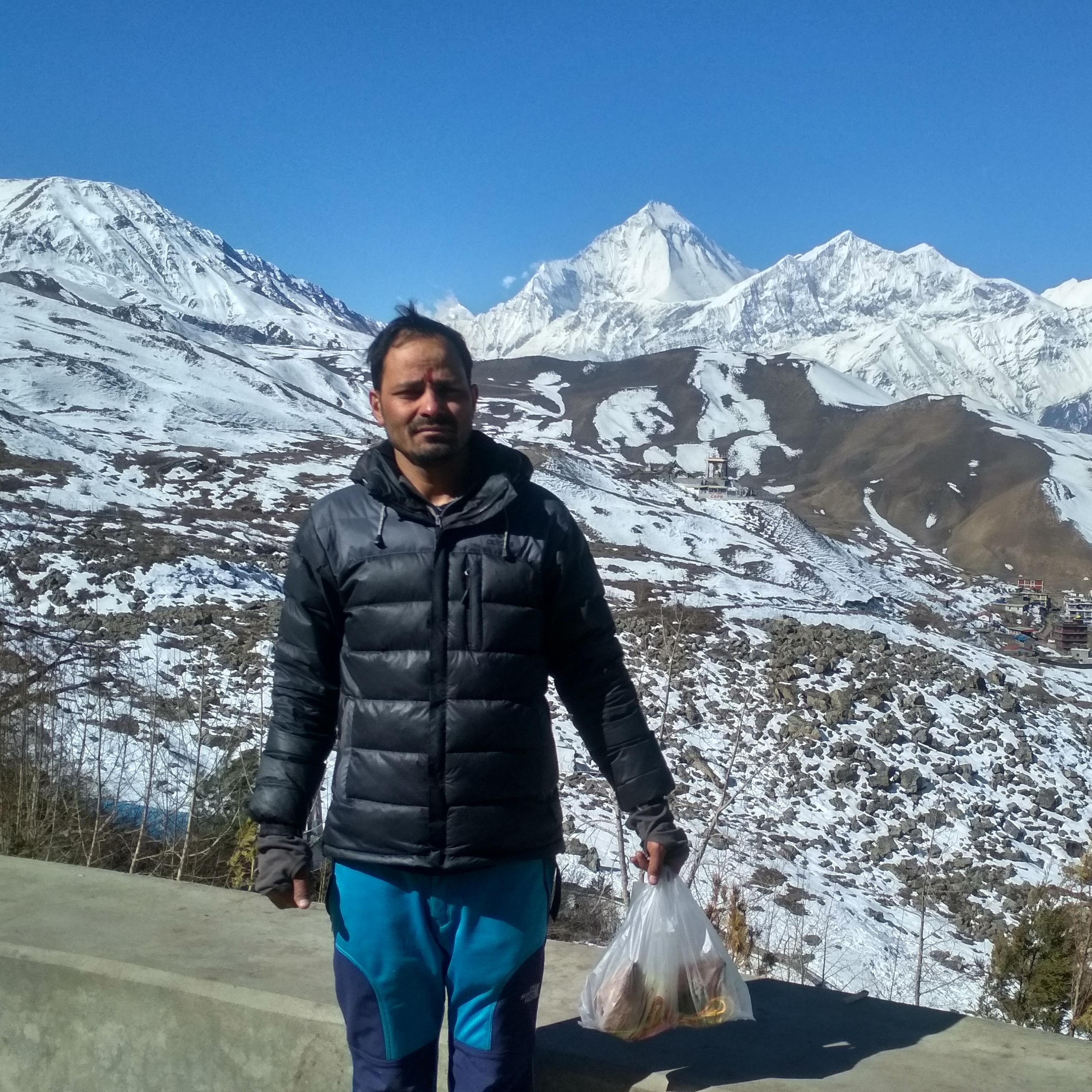Jiri to Everest Base Camp Trek
Jiri to Everest Base Camp Trek Highlights
- At 5364 meters above sea level, stands the base camp of Everest.
- See the recognizable Khumbu icefall and the majestic Mt. Everest.
- magnificent sweeping views of snow-capped mountains, such as Ama Dablam, Nuptse, Lhotse, and Everest.
- traverses a variety of landscapes, such as terraced farmland, thick rhododendron and pine forests, and verdant hills.
- Get up close and personal with the distinctive Sherpa culture and customs.
- Visit monasteries, engage in conversation with the amiable locals, and discover more about their way of life.
- See the revered spiritual and cultural site, the ancient Buddhist Tengboche monastery, located at 3867 meters.
- Discover the thriving Namche Bazaar (3440 m), a Sherpa town.
Jiri to Everest Base Camp Trek is the traditional and difficult trekking route which facilitated easier access to the Everest region. Compared to trekking routes based in Lukla, the classic route offers a longer and more gradual acclimatization process by following the traditional path taken by the early Everest expedition. For a longer and more scenic route, some hikers with plenty of time, however, still like to begin their journey from Jiri.
Jiri is a small town in Nepal’s Dolakha district that is located in the lower hills of the Solu region. It is roughly 1905 meters above sea level. It’s frequently called the “Gateway to Everest.” Trekkers and mountaineers used to begin their journey from Jiri and walk the traditional route all the way to Everest base camp. As a result of its historical ties to the Everest region, it gained significance within the trekking community. Beautiful scenery, such as terraced farms, verdant hills, and sporadic settlements, envelop it. Along with its natural beauty, the area is renowned for its trek from Jiri to Everest base camp, which provides breath-taking views of the Himalayan mountains, forests, and Sherpa Villages.
The trek from Jiri to Everest base camp takes hikers along a picturesque route that passes through picturesque Sherpa villages, thick forests, terraced farms, and high mountain passes. Prayer flags and mani stones, erected as offerings to the mountain known locally as Sagarmatha (Goddess of the sky) in Nepali and Chomolungma (Mother Godesses of the universe) in Tibetan, can be seen strewn along the trail by hikers, mountaineers, and locals alike. Before arriving at Everest base camp, you will also travel through the villages of Bhandar, Sete, Junbesi, Namche Bazaar, Tengboche, Dingboche, Lobuche, and Gorak Shep.
Situated at an elevation of 5364 meters on the southern flank of Mount Everest, the highest peak globally, is Everest Base Camp. Making your way to Gorak Shep will be the first leg of a lengthy journey that culminates in a hike to the highly anticipated Everest base camp. The path becomes more difficult and the temperature drops as you go. You will arrive at Everest Base Camp after hiking through a difficult landscape of loose stones, icy slopes, and gravel for an hour and a half. All of your fatigue will be gone with the welcoming views of the 8000-meter mountains that make up the Khumbu region, as well as the breathtaking views of the Khumbu Glacier and Khumbu Icefall.
All things considered, Jiri to Everest base camp trekking is excellent for those looking for a lengthier and more daring trek to Everest base camp. It gives hikers the chance to progressively acclimate and experience the breathtaking scenery and diverse cultural offerings of the well-known Everest region.
Permits
To undertake the Jiri to Everest base camp trek, you will need certain permits like other treks in the Everest region. They are:
- The Sagarmatha National Park Entry permit.
- The Khumbu Pasang Lhamu Rural Municipality Entrance permit.
Guide and Porters
Porters can help carry your bulky backpack so you can hike lighter, and guides can offer insightful commentary on the history, culture, and geography of the area. Additionally, you can significantly improve your trekking experience and ensure safety by hiring a guide and porter for the Jiri to Everest base camp trek.
Consequently, you are welcome to work with us to hire a licensed trekking guide and porter with insurance who is very experienced, kind, and fluent in English. Our top priority is keeping you safe. As a result, our porter and guide are committed to ensuring that your trekking experience in Nepal is unforgettable while maintaining your safety and letting you enjoy every moment of the journey.
Best time to trek
The months of March, April, and May in the spring and September, October, and November in the fall are the ideal times to hike from Jiri to Everest base camp. With clear skies and comfortable temperatures, the weather is comparatively stable.
One of the greatest seasons to visit Everest base camp is in the spring. Although it quickly warms up, the nighttime low of below freezing persists throughout. The views from the summit are breathtaking, the days are longer with plenty of sunshine and few clouds, and the weather is usually clear and bright.
The autumnal season is also ideal for this trek because of the clear skies that return after the monsoon rains and the evergreen scenery. Even though there are still strong, chilly winds that make it feel even colder, the bright sunshine is warming the highs. The heavier clouds have lifted, allowing the base camp to once again have a clear view of the mountain’s summit.
Foods and Accommodations
Trekkers can find teahouses and lodges with basic amenities for lodging and meals along the Jiri to Everest base camp route. The teahouses offer twin-sharing accommodations. Every room has a shared bathroom, two beds, blankets, pillows, and mattresses. They serve local fare like noodles and Dal Bhat, which is rice, lentils, and vegetables. But as you go higher, the amenities get rudimentary and the cost might go up.
Travel Insurance
Before embarking on any trek in Nepal, including the Jiri to Everest base camp trek, we strongly advise you to purchase travel insurance. Verify that accidents that occur in high altitudes or overseas are covered by your insurance. While we make every effort to look after you, accidents happen occasionally and are beyond our control. Therefore, having insurance is ideal in the event of a medical emergency requiring a helicopter evacuation.
Altitude Sickness
The hike quickly ascends and gains substantial altitude. Thus, you might experience symptoms like headache, nausea, dyspnea, elevated heart rate, and uneasiness. Maintaining a gradual and even speed is crucial to give your body time to acclimate to the rising altitude. If at all uncomfortable, do let your guide and your group know. You will receive first aid right away from your guide.
Jiri to Everest Base Camp Trek Itinerary
Drive from Kathmandu to Bandhara via Jiri
Trek from Bandhara to Sete
Trek from Sete to Junbesi
Trek from Junbesi To Nunthala
Trek from Nunthala to Bupsa / Khari Khola
Trek from Bupsa to Surke
Trek from Surke to Phakding
Trek from Phakding to Namche Bazzar
Acclimatization day at Namche Bazzar
Trek from Namche to Tengboche
Trek from Tengboche to Dingboche
Trek from Tengbouche to Duglha
Trek from Duglha to Loubche
Trek from Lobuche to Gorakshep and Everest Base Camp
Trek from Gorak Shep to Pheriche via Kala Patthar
Trek from Pheriche to Namche Bazzar
Trek from Namche Bazzar to Lukla
Fly back to Kathmandu from Lukla
Jiri to Everest Base Camp Trek Inclusions
What's included
- Domestic flight from Lukla to Kathmandu
- Drive from Kathmandu to Bhandara by private vehicle
- Pick and drop from Domestic airport to hotel and vice versa
- Trekking permits and TIMS cards
- Three times meals a day- Breakfast, Lunch, Dinner and Tea/ coffee and accommodation in teahouse/ lodge during the trek
- One experienced (government licensed) and qualified English speaking guide
- One porter for two trekkers
- Guide/ Porters: food, lodge, transportation, salary, insurance, equipment etc
- Equipment (sleeping bags, down jackets, maps, trekking poles etc).
- All taxes and company service charges
Add-ons
What's not included
- International airfare and visa fees
- Lunch and dinner in Kathmandu
- Personal expenses of bar and beverage bills, wifi, hot shower, bottle of water, extra porters, laundry or any other things which are not mentioned by the company
- Your trekking gears and extra nights in a certain destination
- Your travel insurance which should include the emergency rescue
- Tips for your guide and porters
- Entrance fees during the sightseeing
- Extra expenses due to any event such as strikes, weather conditions, or flight delays
Jiri to Everest Base Camp Trek FAQs
What is the Jiri to Everest Base Camp Trek?
A well-known trekking route in Nepal, the Jiri to Everest Base Camp Trek traces the same route taken by Tenzing Norgay Sherpa and Sir Edmund Hillary on their 1953 Everest expedition. In contrast to the well-liked Lukla to EBC trek, it provides a longer and more conventional route.
How long does the trek take?
After acclimatization days and travel from Kathmandu to Jiri and back from Lukla to Kathmandu, the trek normally takes 20 days to finish.
What is the best time to trek?
The spring (March to May) and fall (September to November) seasons are the ideal times to complete the trek because of the consistent weather and good visibility.
How difficult is the trek?
The length and altitude of the trek make it difficult. It does not require technical climbing skills, but it does require endurance and good physical health.
What permits are required?
To complete this trek, you will require a Khumbu Pasang Lhamu Rural Municipality permit in addition to a TIMS (Trekkers’ Information Management System) card.
Is it necessary to have a guide?
Having a guide is highly recommended for safety, navigation, and cultural insights, though it is not required.




